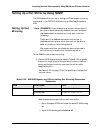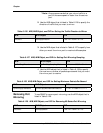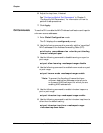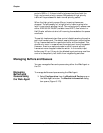
Avaya P550R, P580, P880, and P882 Multiservice Switch User Guide, v5.3.1 20-1
20
Managing Buffers and
Queues on 50-Series Modules
Overview
The following information and procedures provided in this chapter
pertain to layer 2 and layer 3 module configurations. Buffer
management features help you to optimize traffic throughput
through the switch fabric.
This chapter provides the following information:
■ How Queues Work
■ Managing Buffers and Queues
How Queues Work
Frames are buffered in the I/O modules, before and after traversing
the switch. Each queue can hold 256K bytes. (Architecturally they
can support up to 1 MB each).
Each buffer is divided into two queues, one for High-priority Traffic
and one for Normal-priority Traffic. The factory default is for the
high-priority queue uses 20% (51K) of the buffer. The normal-
priority queue uses the remaining 80% (205K). These values can be
modified using either the Web Agent or SNMP.
* Note: When you change these values, you must reboot the
switch before they can take effect.
Less buffer memory gets assigned to the high-priority queue because
the high-priority queue gets serviced more frequently than the
normal-priority queue. Since a frame spends less time on the high-
priority queue, less buffer space is required for the queue.
The Service Ratio can be chosen to match traffic patterns and
performance requirements using a weighted round robin scheduling
algorithm. The available service ratios of the algorithm are defined
in “Managing Buffers and Queues”. The factory default service ratio for
fabric ports is 999/1. The factory default service ratio for physical


















